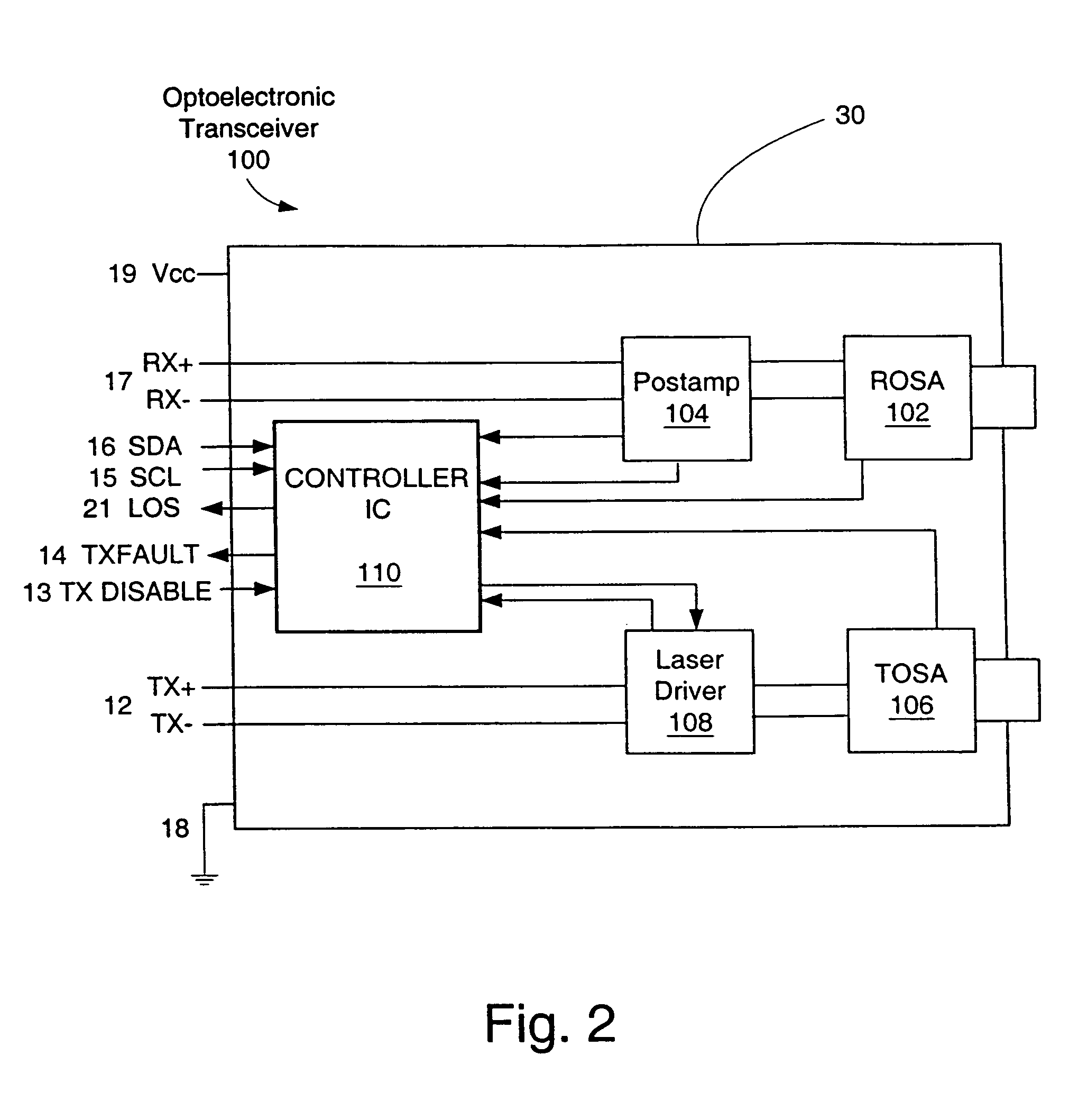Methods for maintaining laser performance at extreme temperatures
a technology of extreme temperature and laser performance, applied in the direction of optical radiation measurement, semiconductor lasers, instruments, etc., can solve the problem of inaccurate temperature compensation scheme using thermistors
- Summary
- Abstract
- Description
- Claims
- Application Information
AI Technical Summary
Problems solved by technology
Method used
Image
Examples
Embodiment Construction
[0007]In general, exemplary embodiments of the invention are concerned with methods for calibrating optical emitters, such as lasers and laser diodes for example, in such a way that the optical emitters can be effectively employed in extreme operating conditions. In one exemplary implementation, the calibration method is employed in connection with an optical transceiver that includes an optical transmitter. Initially, a range of temperatures is defined that is bounded by a low end temperature and a high end temperature, where the low end temperature is less than the high end temperature. At a first temperature, within the predefined range, a first bias current to the optical transmitter is adjusted until the optical transmitter generates an optical signal at a first predefined power level. Next, at a second temperature outside the predefined range, a second bias current to the optical transmitter is adjusted until the optical transmitter generates an optical signal at a second pred...
PUM
 Login to View More
Login to View More Abstract
Description
Claims
Application Information
 Login to View More
Login to View More - R&D
- Intellectual Property
- Life Sciences
- Materials
- Tech Scout
- Unparalleled Data Quality
- Higher Quality Content
- 60% Fewer Hallucinations
Browse by: Latest US Patents, China's latest patents, Technical Efficacy Thesaurus, Application Domain, Technology Topic, Popular Technical Reports.
© 2025 PatSnap. All rights reserved.Legal|Privacy policy|Modern Slavery Act Transparency Statement|Sitemap|About US| Contact US: help@patsnap.com



